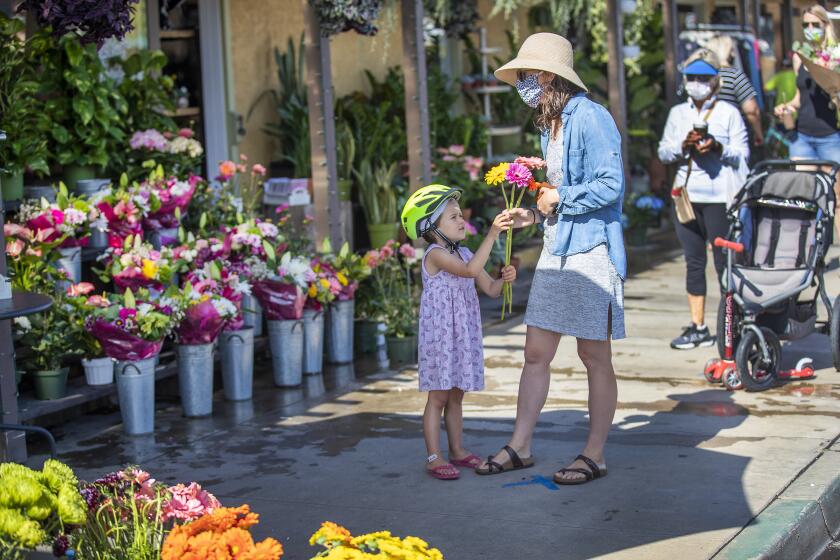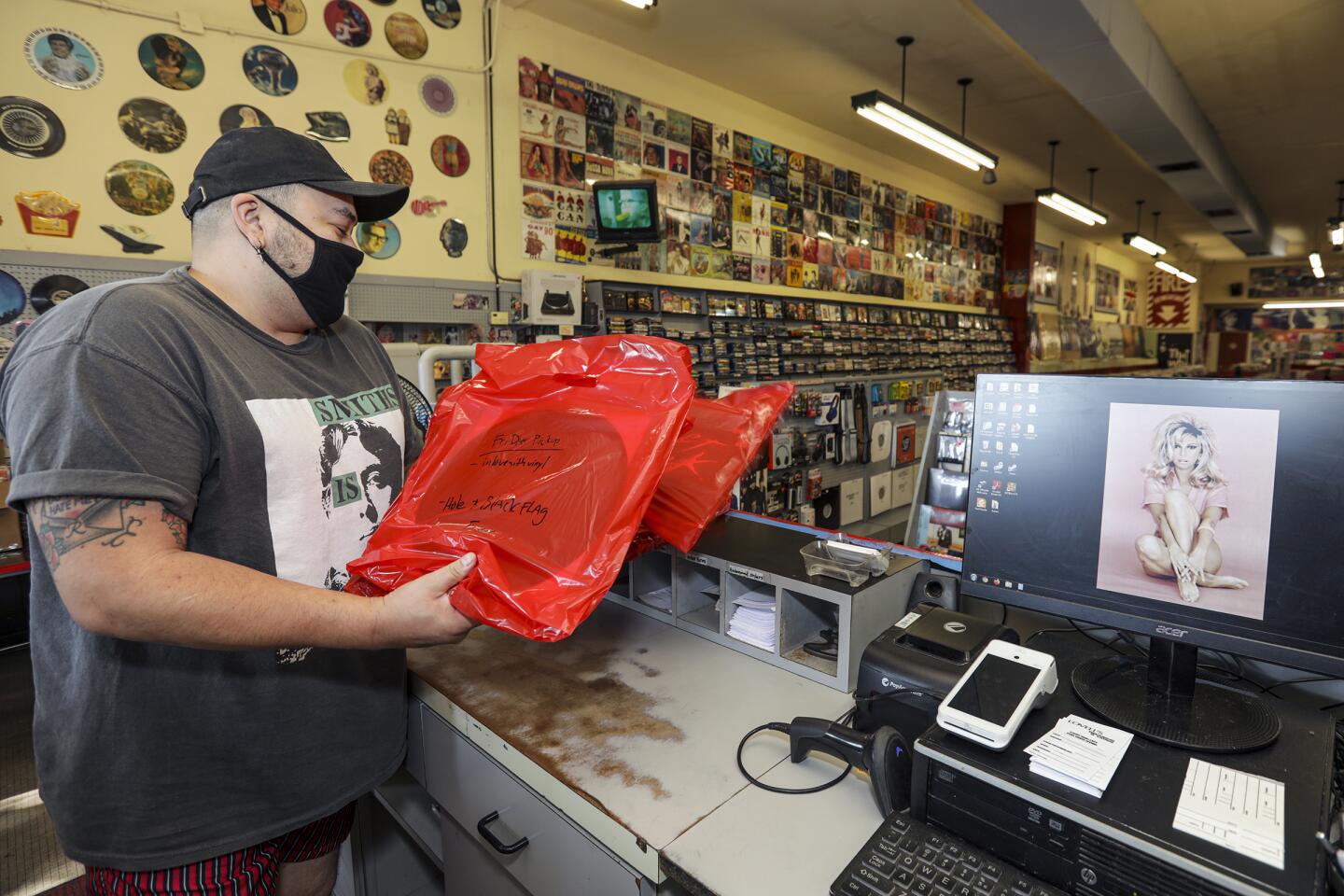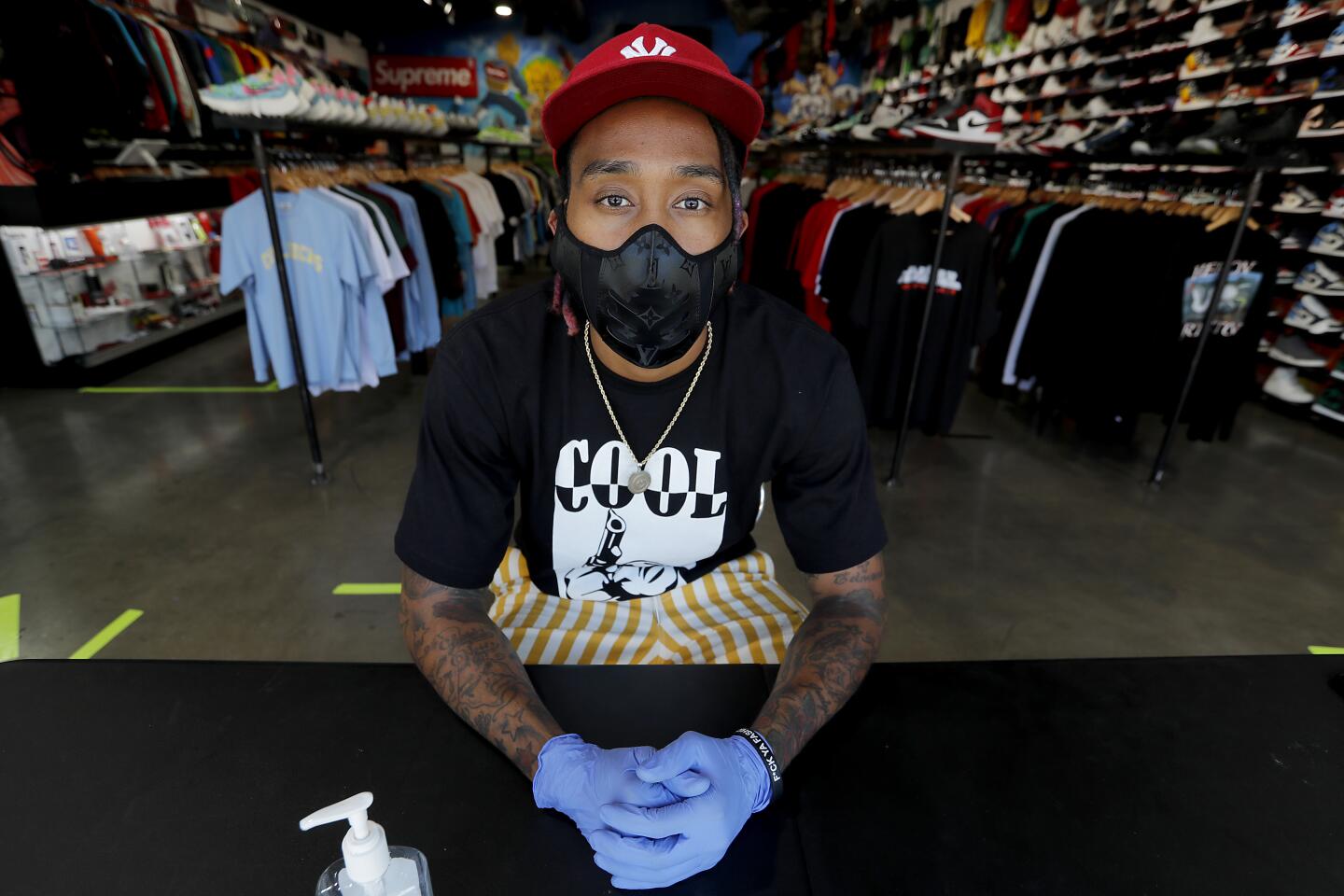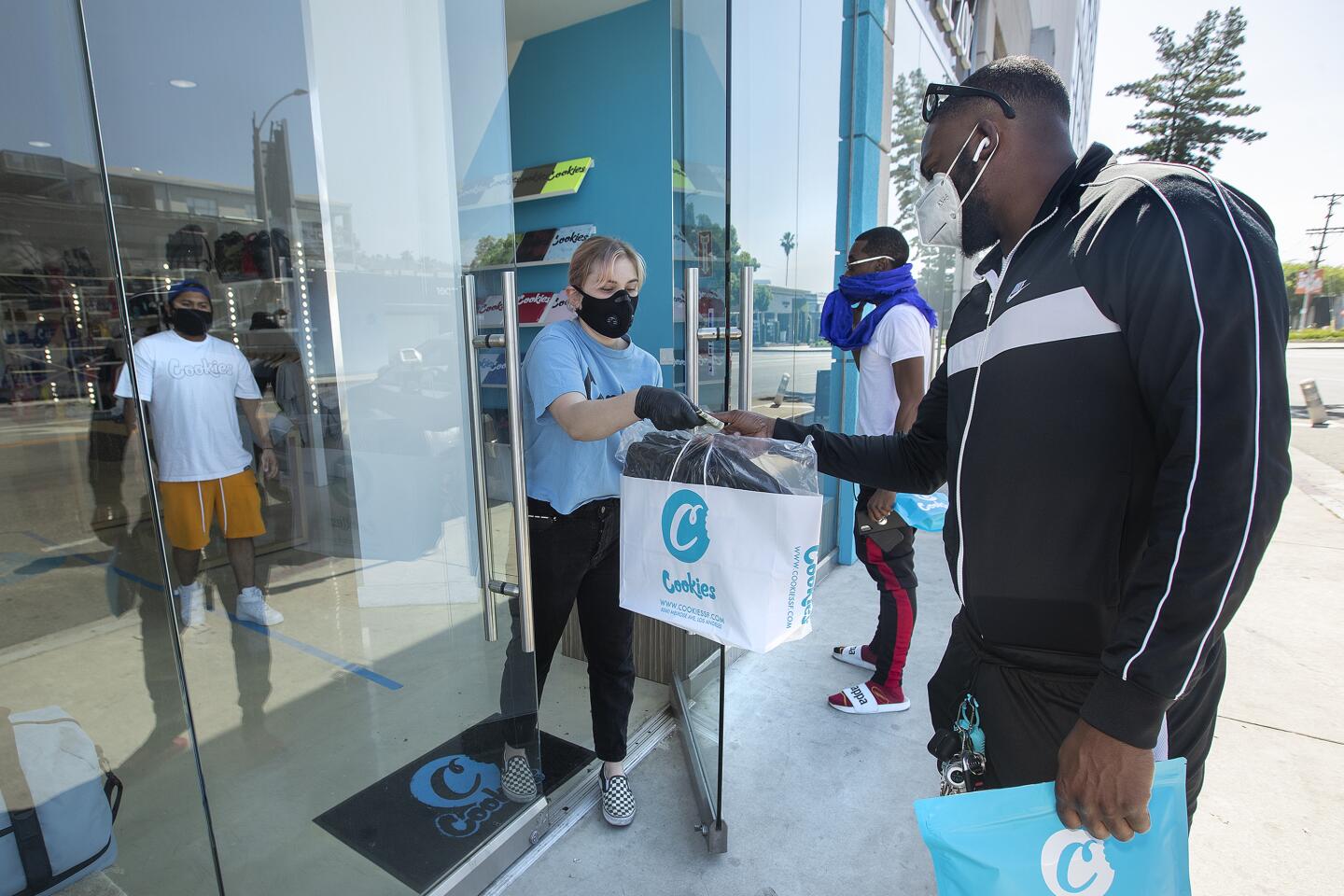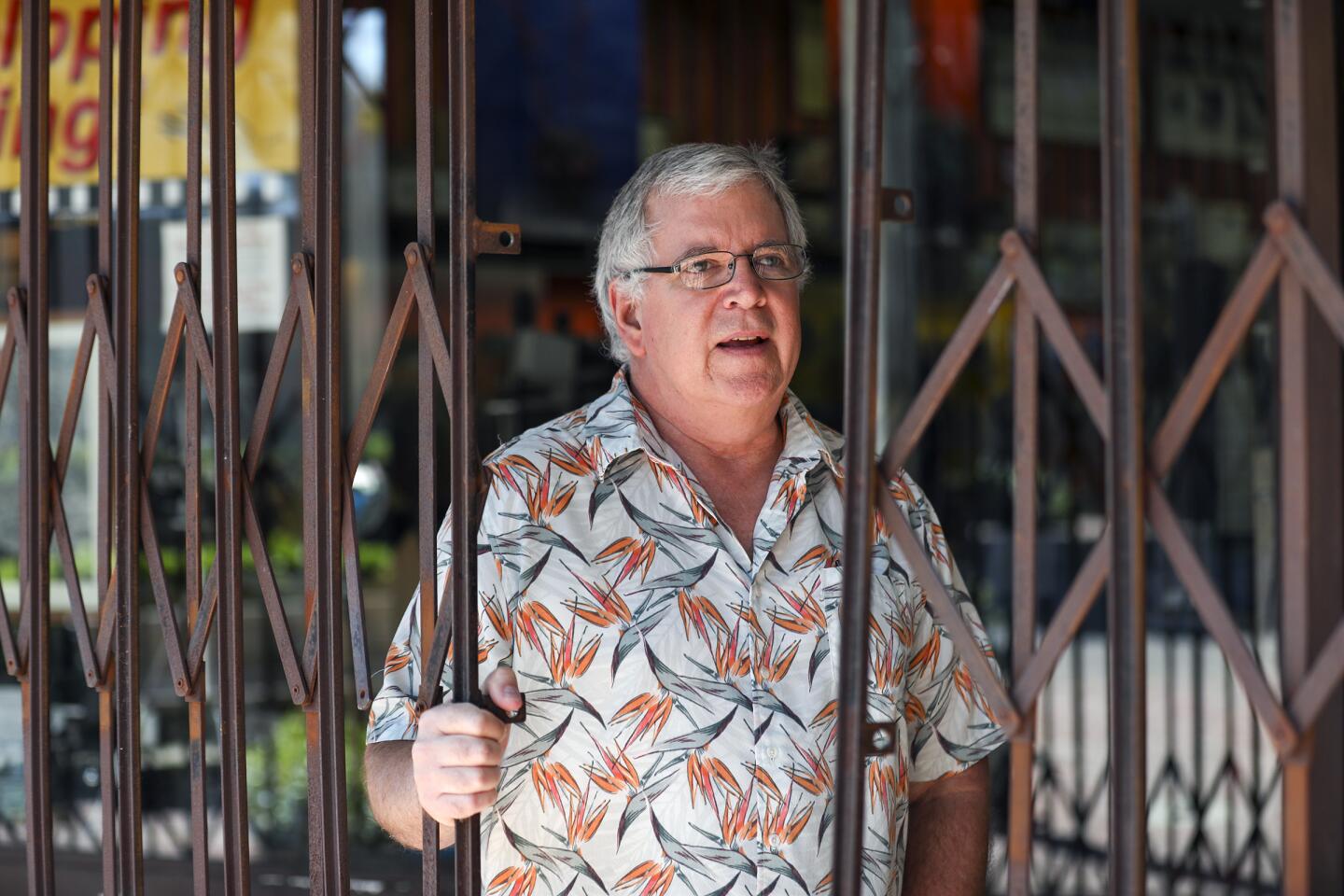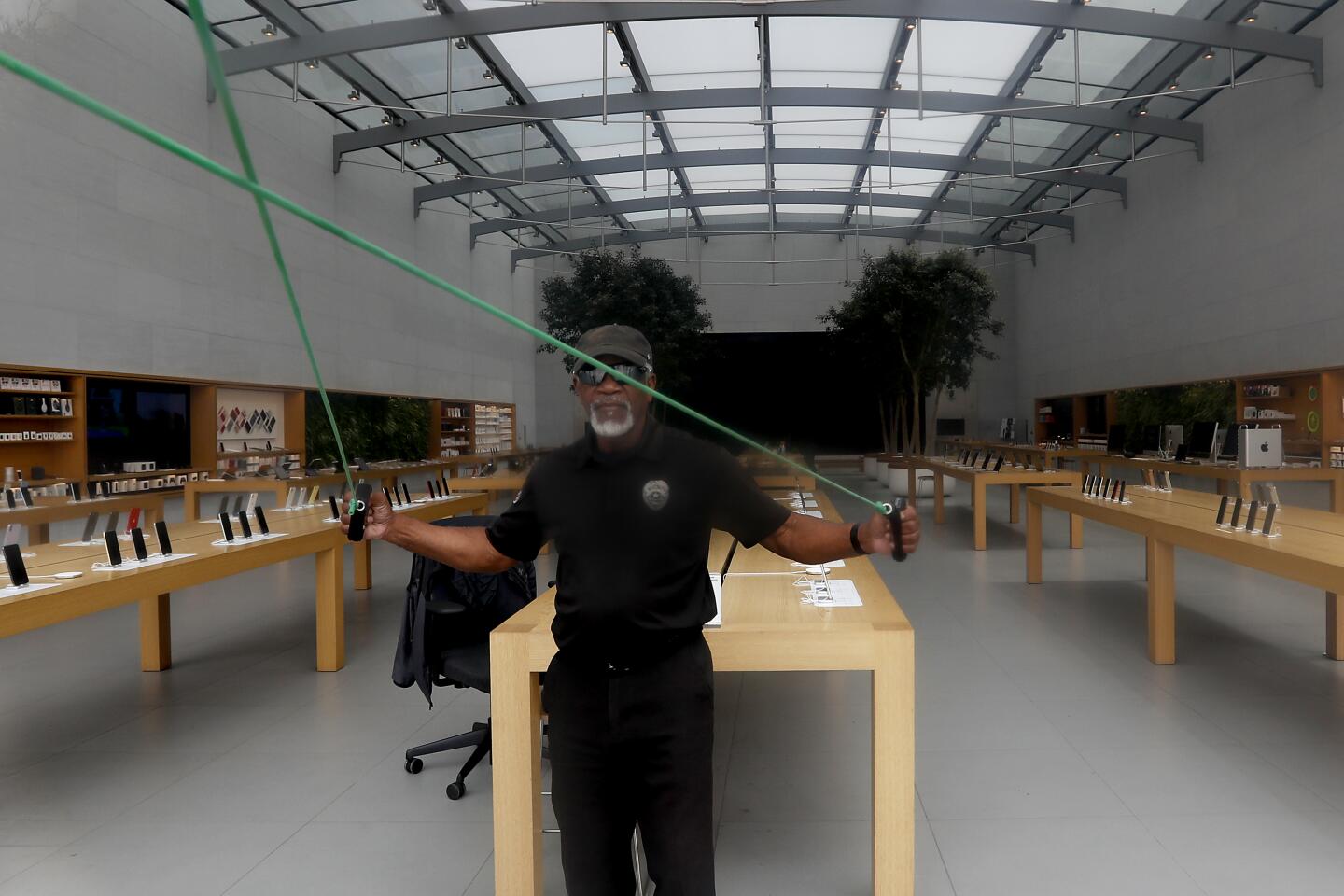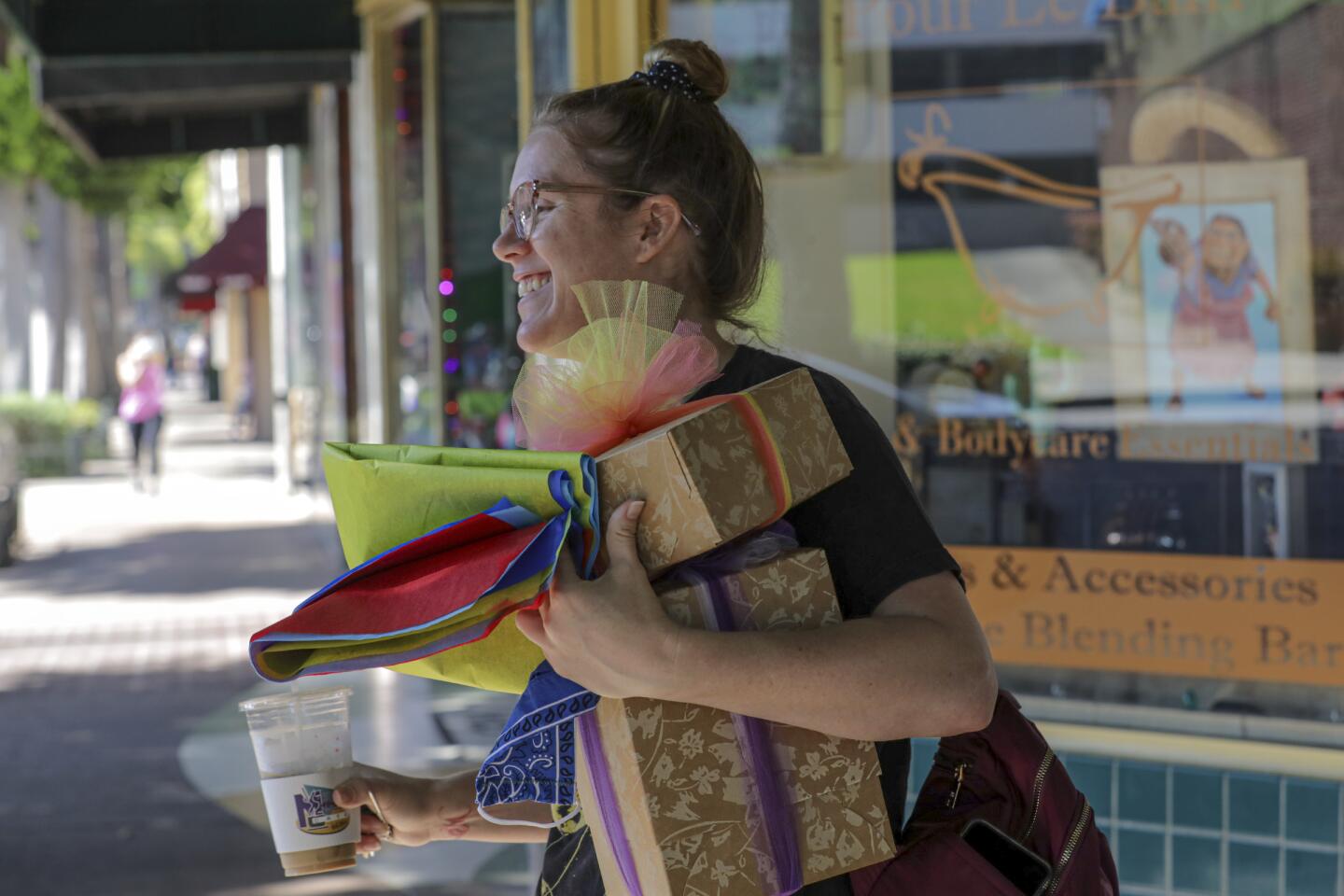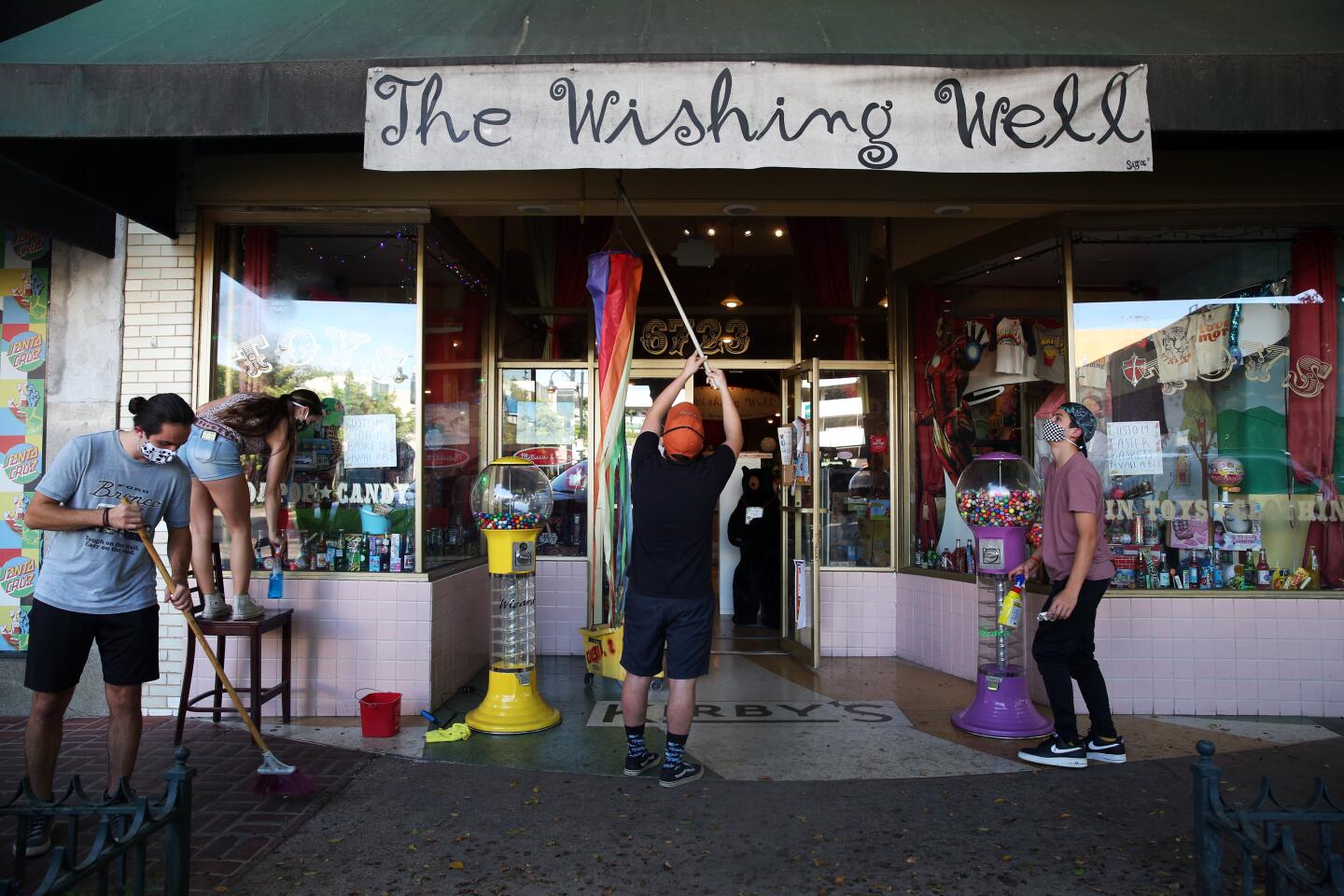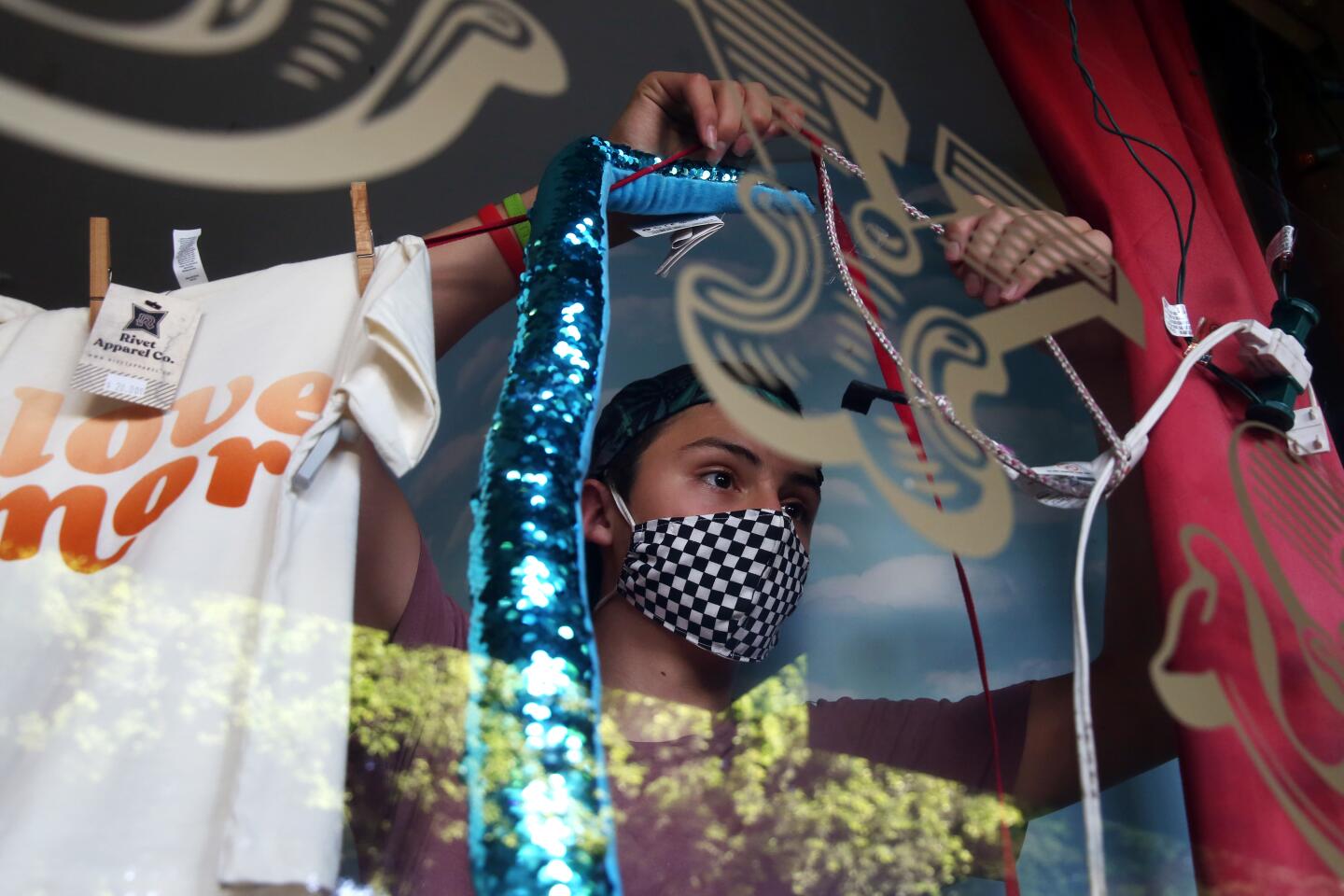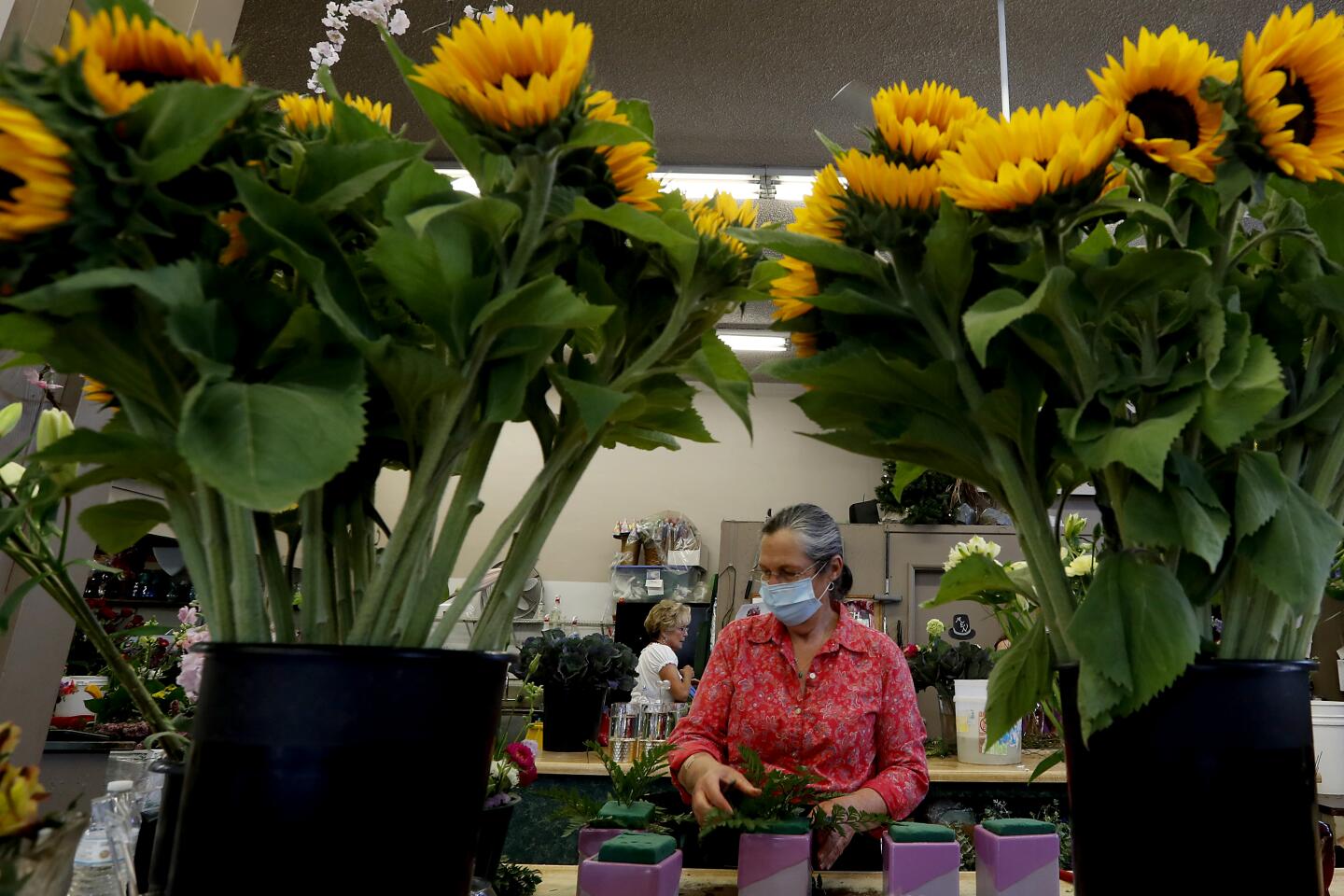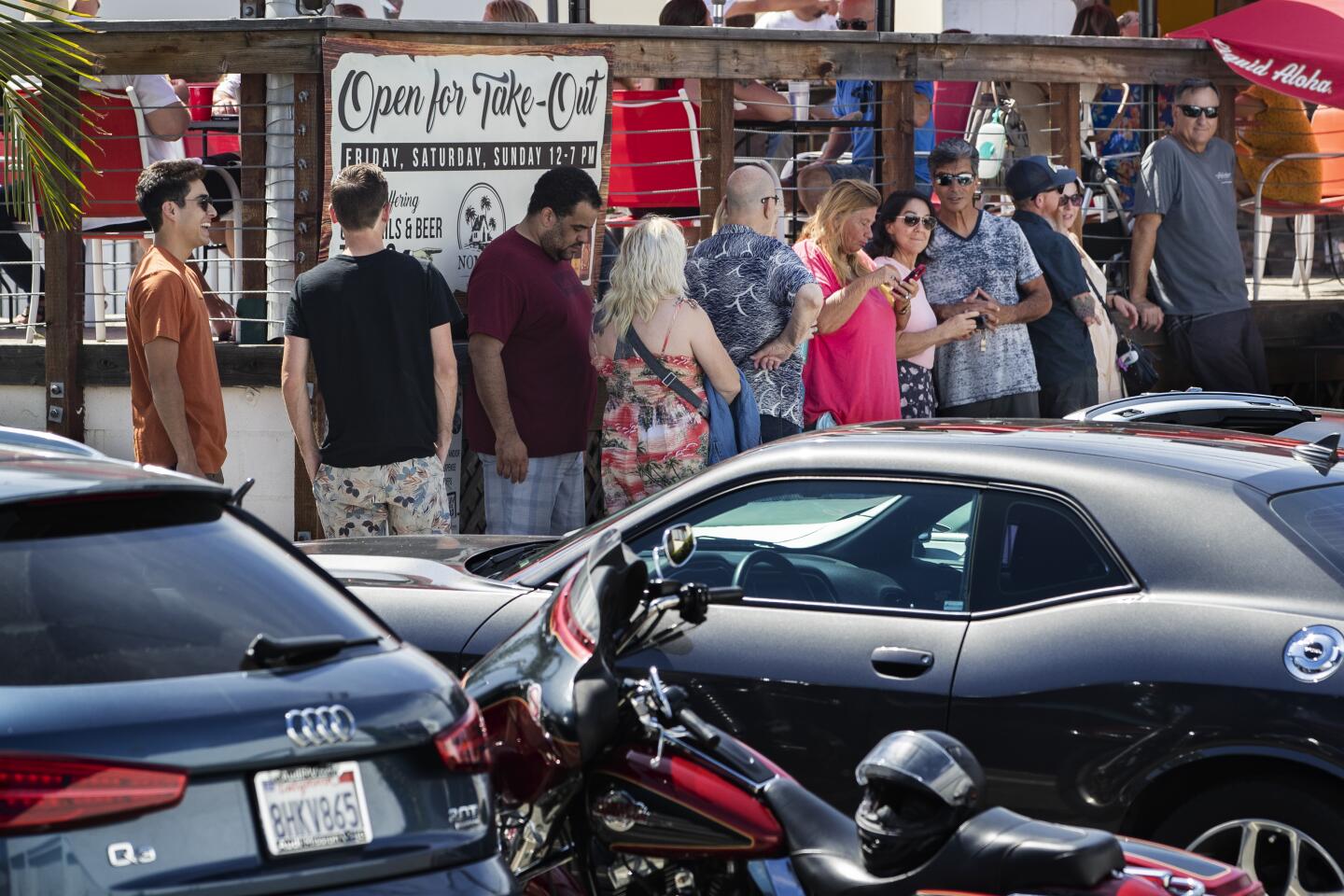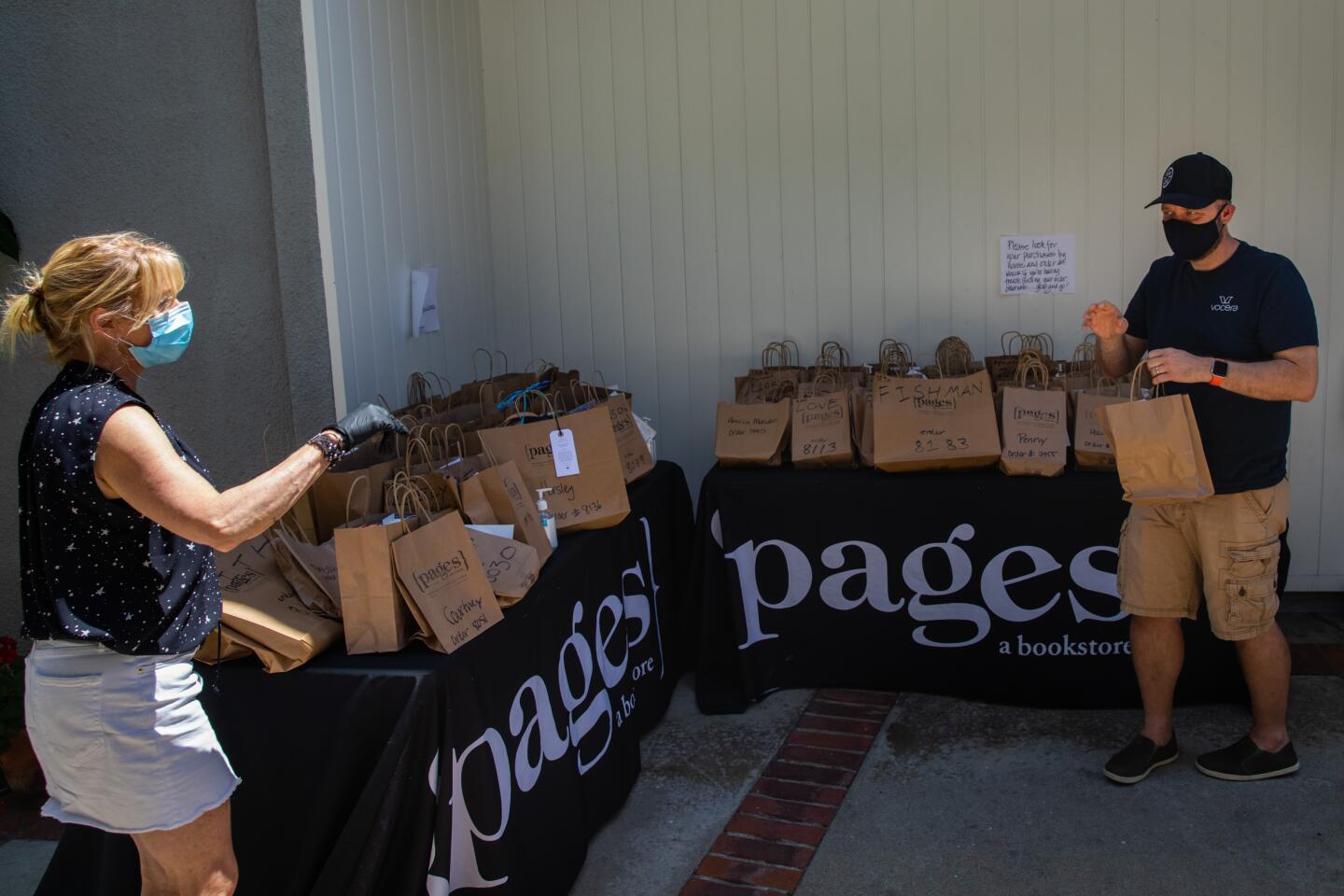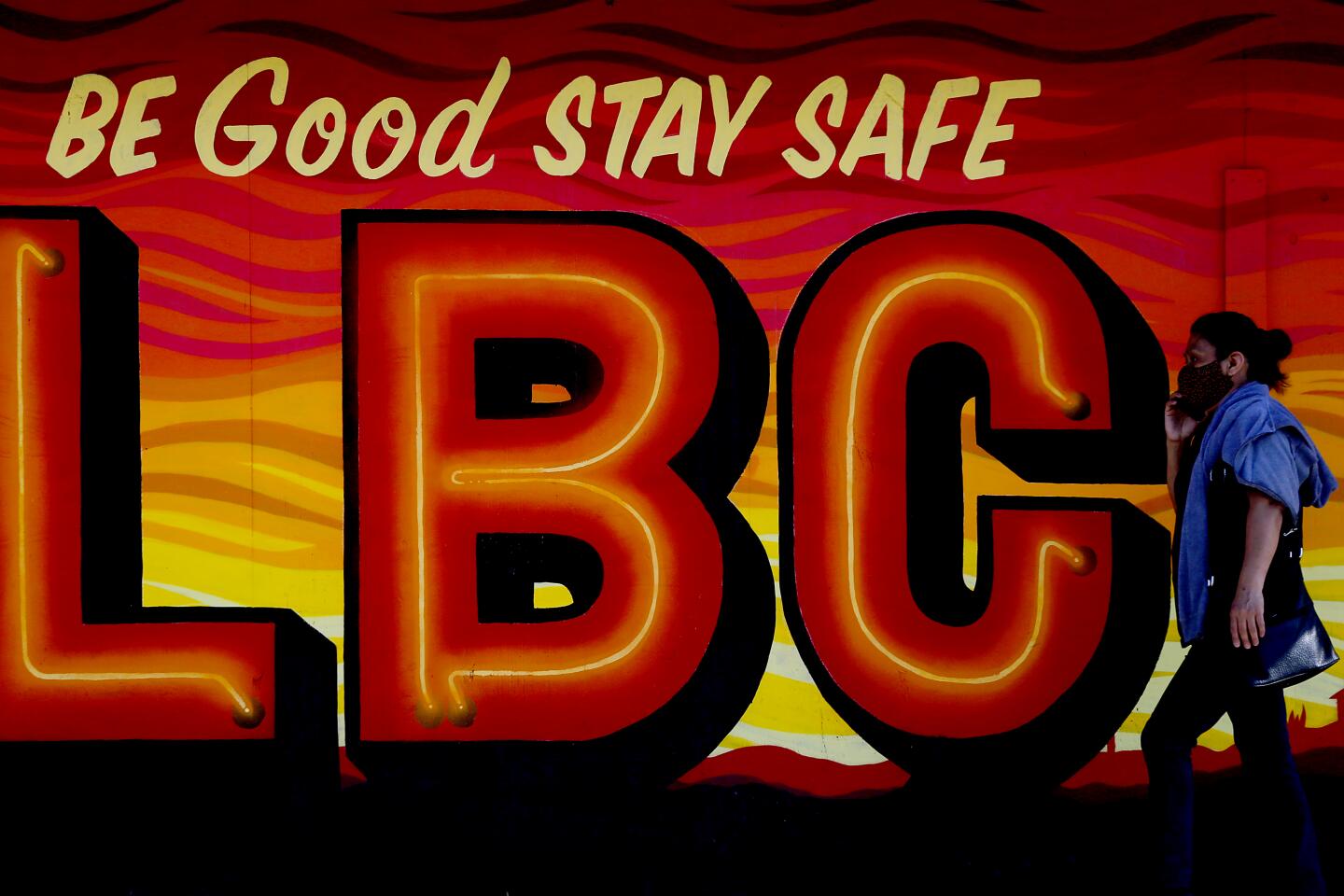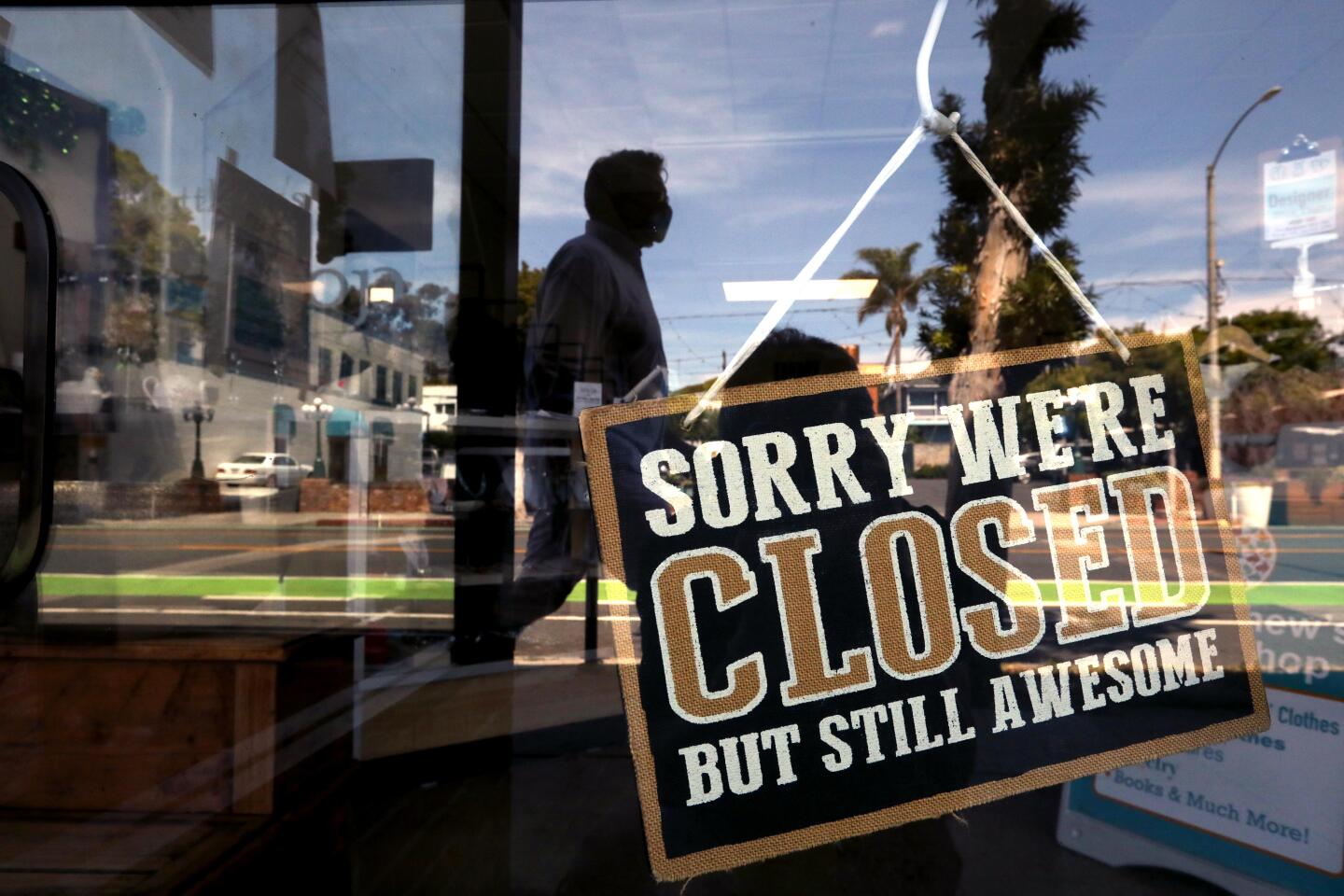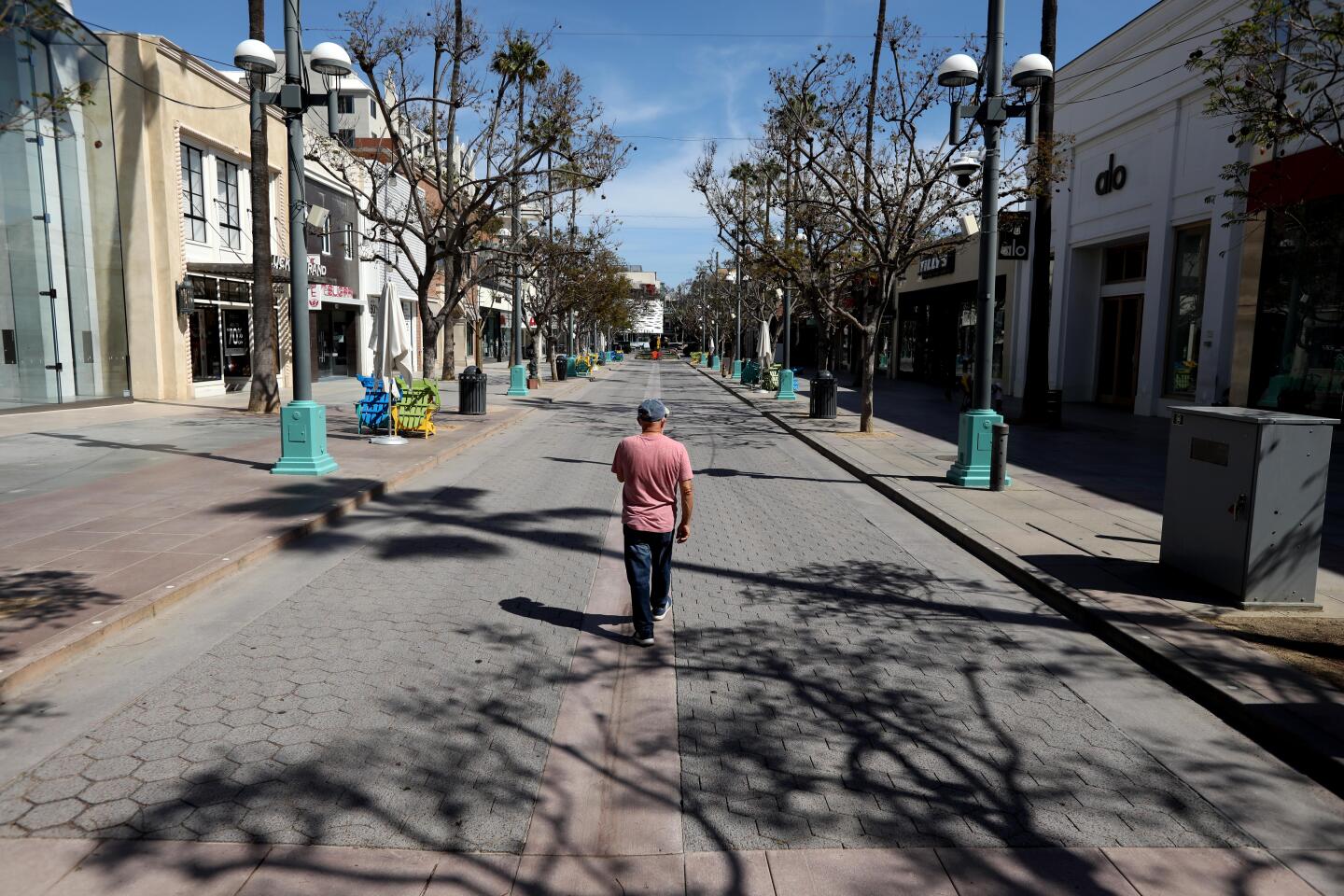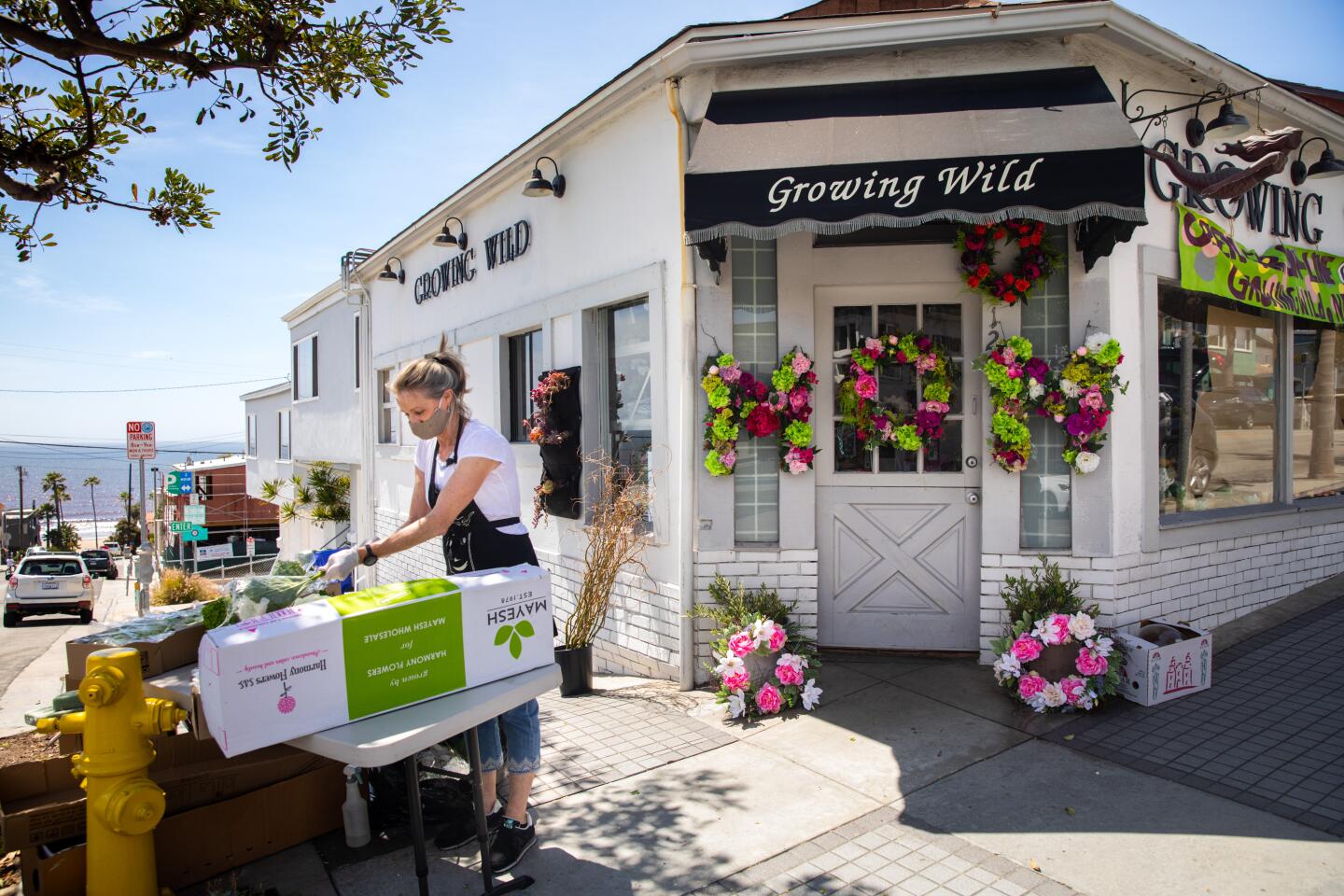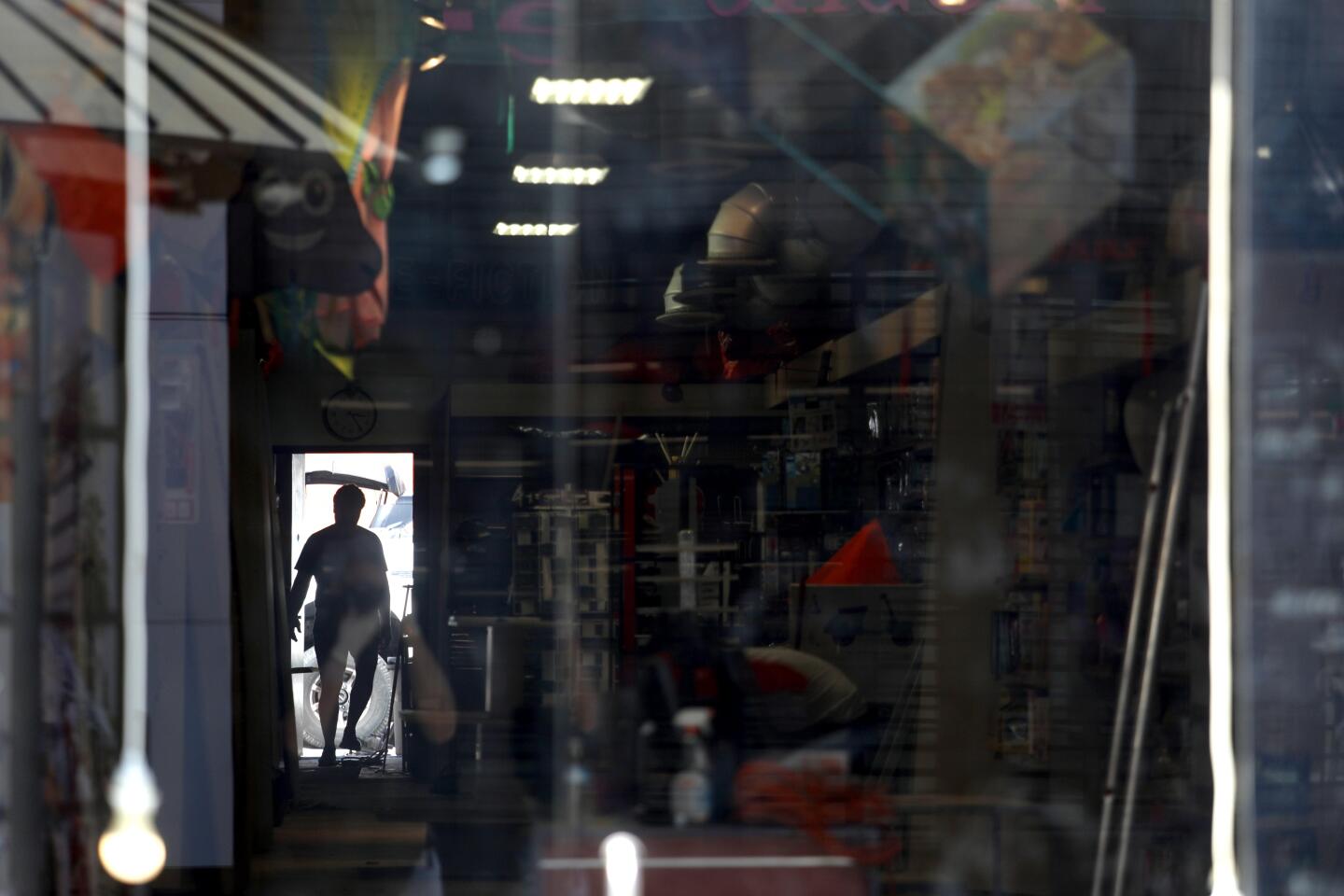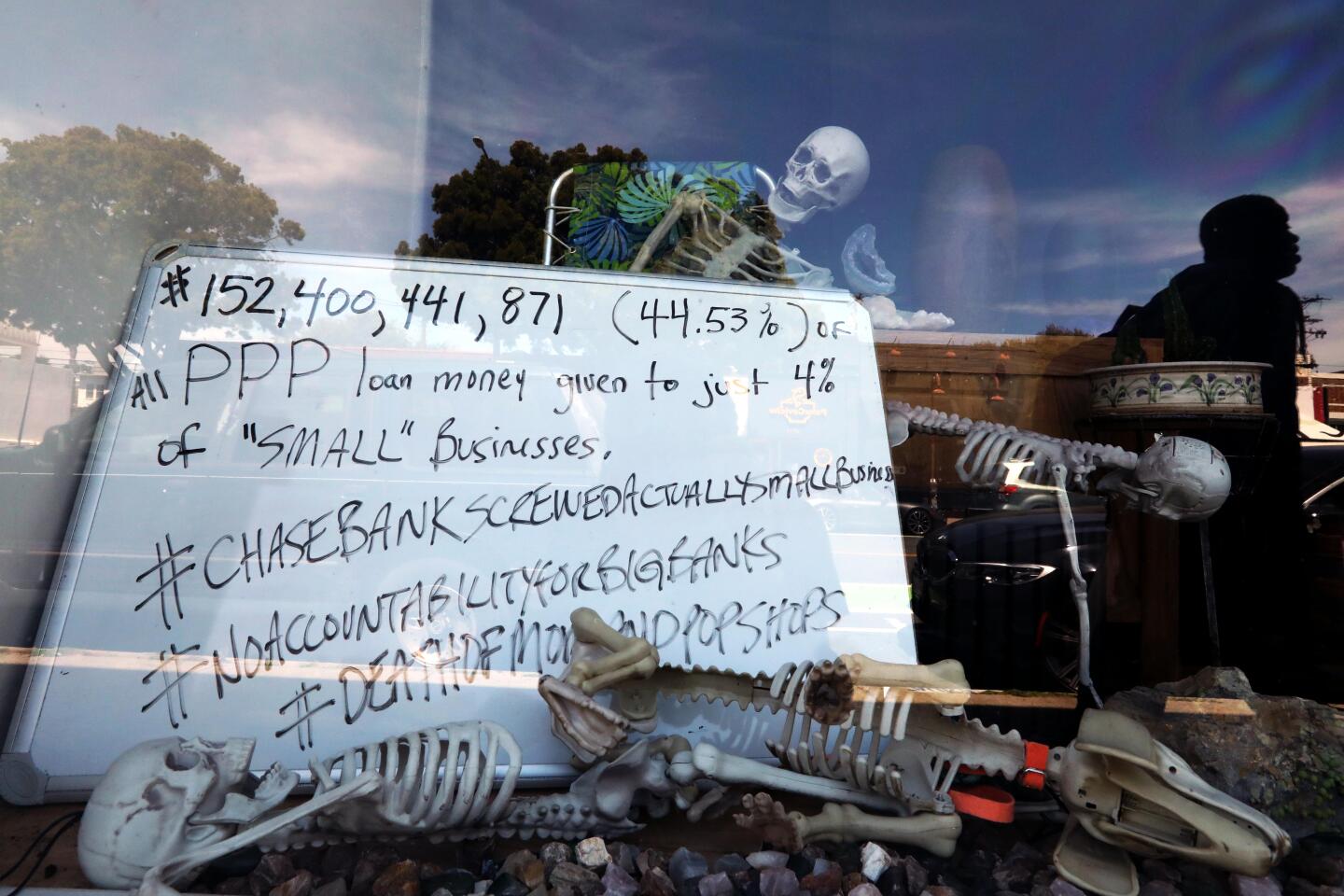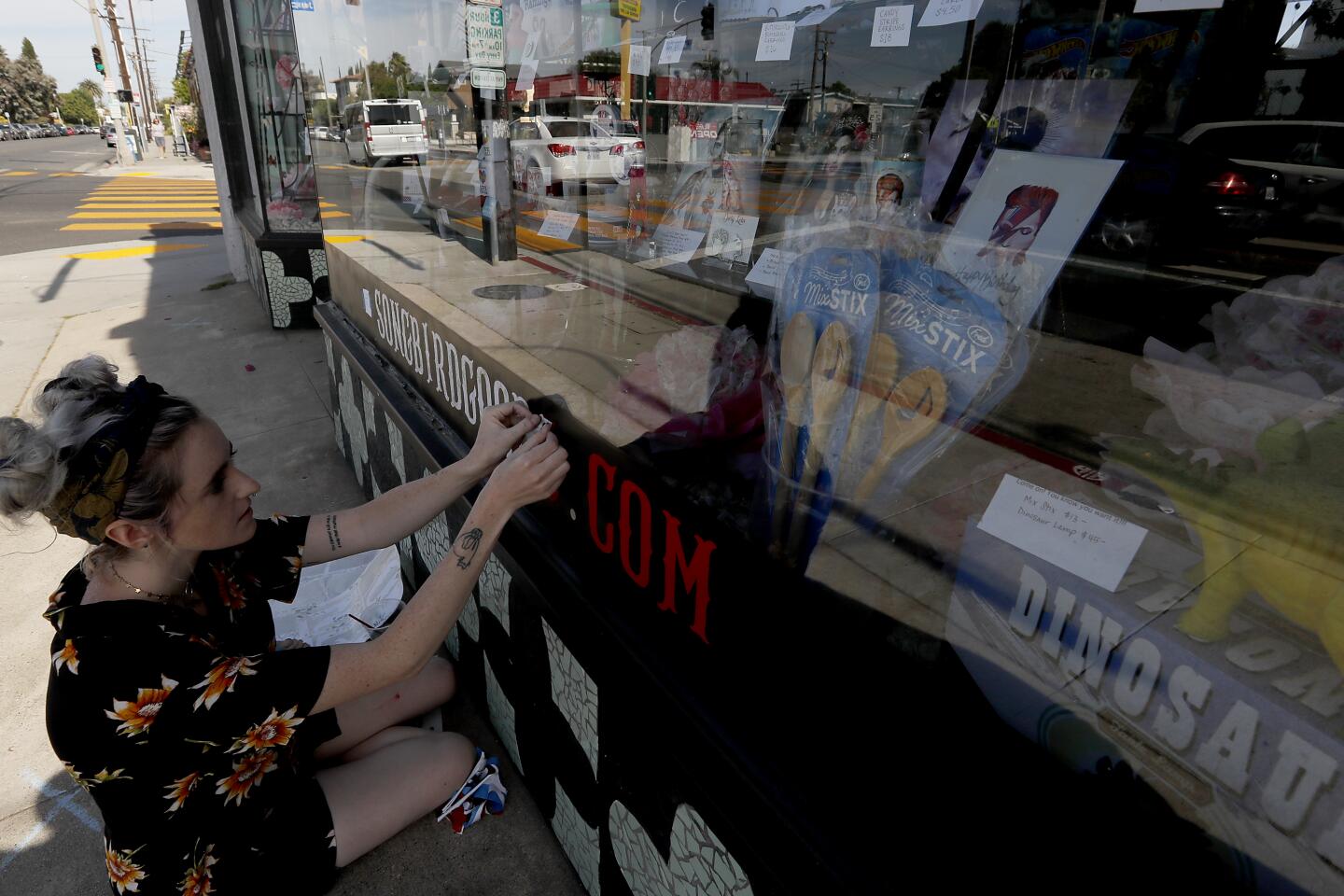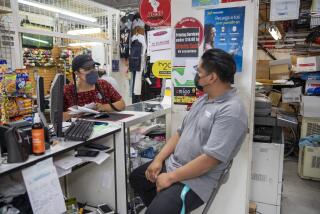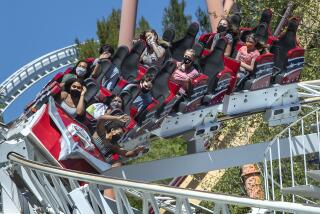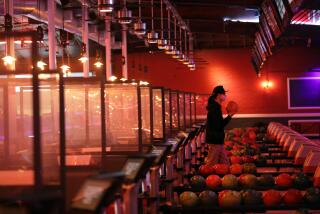Fears of a second coronavirus surge haunt California as it begins slow-speed reopening of economy
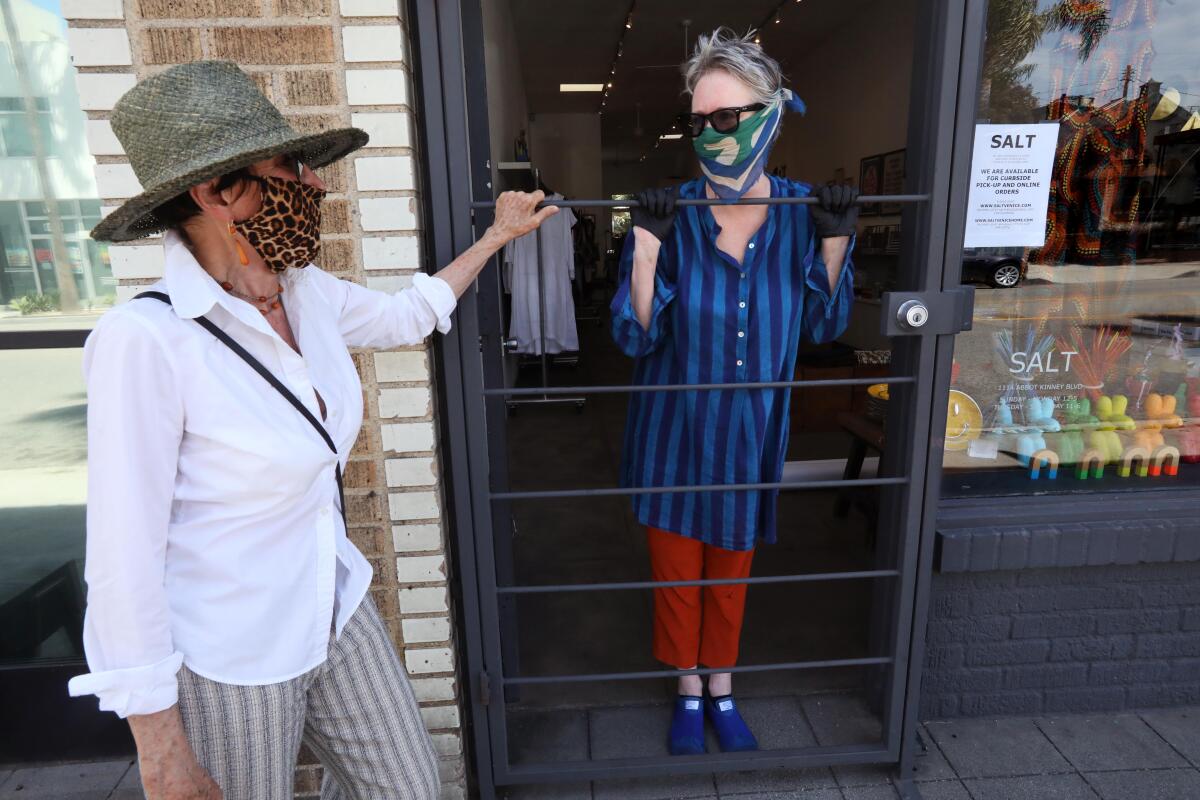
- Share via
SAN FRANCISCO — Reopening California’s devastated economy is increasingly looking to be a slow, deliberative process in many parts of the state as Gov. Gavin Newsom issued strict protocols that communities must satisfy to speed reopening and health experts warned of the risks of a surge if social distancing is abandoned too early.
California will take baby steps in the process on Friday, as a scattering of retail businesses are allowed to reopen for curbside pickup.
But that will still leave huge sectors of the economy shut down, and leaders in communities across California will have to declare they’ve reduced the coronavirus danger to open up more businesses, such as restaurant dining rooms and shopping malls. That is going to be a challenge in hard-hit areas such as Los Angeles County, which has seen more than 1,400 deaths — more than half of the state’s total — and is still recording hundreds of new cases a day.
Parts of California, including Los Angeles County, are allowing some businesses to offer curbside service Friday.
A Times data analysis found that Los Angeles and many other urban counties have not yet hit Newsom’s criteria to further open businesses, and it’s unclear when they will. It’s likely some rural counties that have been hit much less hard by coronavirus than the Bay Area and Southern California will be able to reopen at a faster rate.
With more than 2,500 deaths, California avoided the huge death toll faced by hot spots such as New York, which has recorded more than 25,000 fatalities. But health experts said the Golden State is still highly vulnerable to new outbreaks.
While New York and New Jersey are seeing new cases drop, California is still seeing new weekly cases and deaths persist at a plateau, with roughly 11,000 new cases and 500 new deaths in each of the last three weeks.
Hospitalizations have declined noticeably in Northern California, but they have remained steady in Southern California. Experts nationally have also started to realize that people are increasingly fed up with staying at home and are increasingly going out. Some states are also lifting stay-at-home orders. Those are reasons why the University of Washington’s Institute for Health Metrics and Evaluation is now estimating a national death toll of more than 134,000 by the beginning of August, a 78% increase from the death toll as of Thursday, which was more than 75,000.
“We’re going to level off, then we’re going to go up some more,” Dr. George Rutherford, a nationally renowned UC San Francisco epidemiologist and infectious disease expert, said Thursday at a campus online panel. “This is a consequence of behavior.”
Crowds have already been seen in California, where health experts and elected officials were appalled by people flocking to San Francisco’s Mission Dolores Park last weekend and Orange County’s beaches two weekends ago. In the last seven-day-period that ended Wednesday, the number of coronavirus cases in Orange County rose by 50%. Between April 23 to 29, Orange County reported 499 coronavirus cases, and last week, it reported 752.
“We have to be really, really careful about doing this. Obviously, you have to trade it off against the economy,” Rutherford said. “If we have a prolonged depression, that has tremendous costs in morbidity and mortality as well. So it’s a trade-off: Just understand that we’re trading economy for lives.”
Yuba and Sutter counties got a taste of it this week. The Northern California counties north of Sacramento defied Newsom and allowed some businesses to open with social distancing and other safety rules. But the local public health officer, Dr. Phuong Luu, on Wednesday expressed alarm that face coverings were not being worn inside reopened businesses and efforts were not being made to keep people at least six feet apart as much as possible. She said more people could get sick if the behavior continued.
Under Newsom’s plan, in-restaurant dining, shopping malls and some office buildings could also be allowed to reopen in the weeks ahead if public health officials in a county are able to demonstrate that the spread of the coronavirus has stabilized there.
County officials must also attest to the state that they have adequate testing and hospital capacity and the ability to isolate people with the virus, and trace who they have contacted with a staff of disease detectives.
Newsom said earlier this week that bookstores, music stores, toy stores, florists, sporting goods retailers, clothing stores and others can reopen for curbside pickup as early as Friday, unless barred by tougher local restrictions. Manufacturers and suppliers that provide goods for those businesses also will be allowed to resume operating.
The state is recommending that retailers continue to encourage physical distancing and implement “hands-free” ways for customers to pay. Manufacturers should close indoor break areas, and warehouses should carry sanitation materials during deliveries and provide employees with personal protective gear, said Dr. Mark Ghaly, the state’s secretary of Health and Human Services.
“We’re moving forward but we’re doing it, always, with an eye being led by the data, by the science, by public health,” Newsom said during his daily COVID-19 briefing in Sacramento.
Ghaly said on Thursday that counties that want to move ahead of the state’s restrictions to open venues such as restaurant dining rooms and shopping malls cannot have more than one COVID-19 case per 10,000 residents and one death in the last two weeks. Counties also must have disinfectant supplies and protective gear for essential workers and be performing at least 1.5 tests per 1,000 residents. In addition, Ghaly said counties will need to have 15 contact tracers per 100,000 residents and the ability to house at least 15% of their homeless population.
Newsom’s reopening plan does not currently permit counties to reopen higher-risk venues identified in future phases, known as Stages 3 and 4. They include personal grooming businesses, churches, entertainment venues, live concerts and sports. Newsom said the first community spread of the coronavirus in California happened in a nail salon.
The order to stay home unless venturing out to grocery stores, hospitals, vet appointments and other necessary trips also remains in effect.
John Kabateck, the California director of the National Federation of Independent Business, praised Newsom’s reliance on recommendations from his public health advisors to drive his plans to reopen the economy in the safest way possible.
The financial costs of the statewide restrictions, however, also come with devastating consequences to workers, families and business owners and cannot be dismissed, he said. Small business owners have been critical of Newsom’s plan, noting that big-box stores such as Walmart, Target and Costco are allowed to serve customers inside their stores while some mom-and-pop stores must stay closed or offer only curbside pickup.
“Restaurants are crumbling. Retail stores are devastated. And the people who work there are struggling to feed their families and make ends meet,” said Kabateck, whose organization represents 15,000 small businesses in California. “They hope and pray that all small businesses can have a system and structure to turn their lights on very, very soon.”
Kabateck urged Newsom and state lawmakers to avoid burdening small business owners with new laws and workplace requirements that impede their ability to reopen. For instance, the expanded workers’ compensation rights Newsom announced on Wednesday probably will drive up costs on small businesses that already are struggling to survive.
Regardless of Newsom’s announcement on Thursday, leaders in Los Angeles and the San Francisco Bay Area have said they plan to take a cautious approach to reopening because the coronavirus remains a significant public health threat in those metropolitan areas.
“The numbers are still going up,” San Francisco Mayor London Breed said. “The number of deaths are still going up, and we have not lowered the curve, and we have to be mindful of that.”
Los Angeles County remains the primary COVID-19 hot spot in California, with more than 1,400 deaths and more than 29,000 confirmed cases, including more than 800 new cases reported on Wednesday alone.
In some areas that have been less hard hit, however, local officials have pleaded to Newsom to allow them to accelerate efforts to lift the stay-at-home restrictions. In San Luis Obispo County, for instance, a bipartisan group of mayors and other political representatives asked Newsom in a letter to allow the county to begin a “science-based, thoughtfully phased reopening of our economy.”
Times staff writers Willon and Luna reported from Sacramento, and Lin from San Francisco. Times staff writers Sean Greene, Luke Money and Priscilla Vega contributed to this report.
More to Read
Sign up for Essential California
The most important California stories and recommendations in your inbox every morning.
You may occasionally receive promotional content from the Los Angeles Times.
